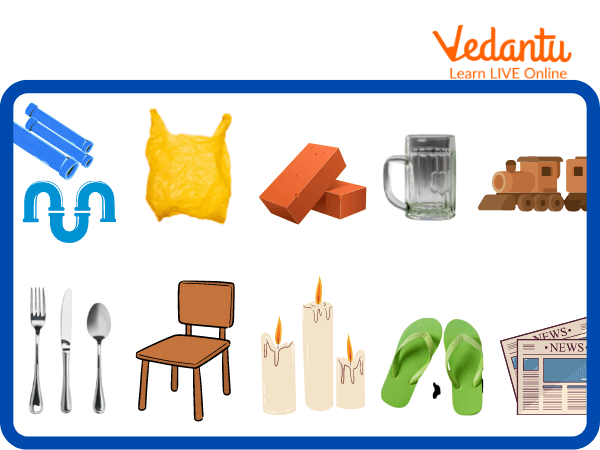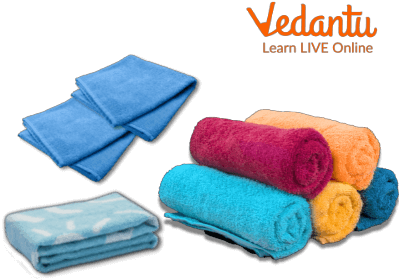




Overview of Dull Materials
Whatever you see around yourself or use in daily life is made up of different types of materials. Examples: paper, cotton, plastic, wood, etc. Some materials are excellent, and some are bad on the basis of their properties. Materials can be used to create a variety of objects because of their various qualities. Every material has strengths and weaknesses, and it is important to choose the right materials for every job.
Should the material be hard or soft? Does it need to be absorbent or non-absorbent? Is the material required to create shiny or dull? In this article, we will discuss dull materials, their properties and many more things. Let’s dive in!
What are Dull Materials?
Dull materials are those that do not reflect light very well, such as paper, plastic, wood, rubber, jute, etc. Slate is also an example of dull material, as you can see a slate cannot reflect light.
Properties of Dull Materials
Dull Materials have a rough surface.
They are also not shiny as metals.
These materials have a dull appearance and are said to have no lustre. They do not have an attractive appearance.
They also do not show malleable and ductility properties.
Some dull materials absorb water, such as paper and wood, and some do not absorb water such as plastic and rubber.
Examples of Dull Materials
Plastic
It is a man-made material made of polymers. There are hundreds of different kinds of plastics in all sorts of colours. There are many different types of plastics. They are used for making different types of materials based on their properties. For example, thermoplastics are used for food packaging, films, etc.
Wood
It is a strong material that is obtained from trees. It is used to make furniture items like benches, chairs, etc.
Rubber
It is also a synthetic polymer. It is obtained from plants. It also has a rough and dull surface. It is used for making insulating handles, tyres, balloons, etc.
Paper
It has a plain surface and is used in daily life by humans. It is also obtained from plants. It is mainly used for writing purposes.
Coal
It is made up of carbon and is a non-metal. It also has a rough and dull surface. Coal is used as a fuel.
Cotton
It is a soft material that is obtained from plants and is used for different purposes like making clothes, etc.
Jute Bag
It is made up of jute material and has a dull appearance.

Examples of Dull Materials
Types of Dull Materials
There are two types of dull materials, which are mentioned below:
Absorbent Materials
Materials that quickly absorb liquids, including water, are referred to as absorbent materials. This kind of material has small holes in it. Some examples of absorbent materials are:
Textile products that are made of cloth (cotton, silk, wool) for example towels, handkerchiefs, t-shirts, socks, jeans, denim, robes, shirts, blankets, carpets, woollen garments, etc.
Towel - Soak up water to help dry your body.

Towels
Objects that are made of cotton, for example, cotton buds, coffee filters, cotton wool, face cotton, floor mop, etc.
Cotton wool - It is used in bandages to absorb blood from a wound.
Objects that are made of wood, for example, envelopes, books, tissue paper, newspapers, etc. Coconut husks and tree trunks also can absorb water.
Other objects such as sponges (natural and synthetic) and feathers.
Paper Towels - It is used to clean up household spills and to dry hands.
These were some examples of absorbent materials.
Non-Absorbent Materials
Materials that do not absorb liquids, including water, are referred to as absorbent materials. Such as rubber gloves, plastic bottles, metal, glass, etc. Other examples of non-absorbent materials include:
Objects that are made of metal, for example, keys, nail clippers, coins, tin cans, etc.
Objects that are made of rubber, for example, erasers, rubber gloves, tires, etc.
Objects made of plastic, for example, plastic pails, plastic bags, cutting boards, raincoats, umbrellas, tents, polystyrene containers, etc.

Rubbers
Objects that are made of glass.
Other objects such as pebbles, stones, and marbles.
These were some of the non-absorbent materials examples.
Summary
In this article, we discussed Dull materials and their examples. Dull materials are those that do not reflect light very well. These materials have a rough surface and are not shiny. Some dull materials absorb water while some don’t, such as paper, wood, rubber absorbs water and plastic doesn’t absorb water.
Absorbent Materials and non-absorbent materials are also dull materials. Through this article, we are now aware of dull materials and their uses. We also discussed their properties and their examples. We use many dull materials in our daily routine without even realising it. We discussed those materials in the above article. We hope this article is beneficial for you. In case of any queries, feel free to ask in the comments.
FAQs on Dull Materials
1. What are hard materials?
Hard materials are difficult to compress, cut, bend, or scratch. For example, iron, bone, and steel. They also have many other properties, such as malleability, i.e. the ability to be drawn into thin sheets, and ductility, i.e. the ability to be drawn into thin wires.
2. Is diamond a shiny or dull material?
Natural diamonds are dull and dim; their shiny look is a product of their cut, clarity, and reflection.
3. What makes material dull?
Some materials like iron, copper, and aluminium often lose their shine and appear dull due to the effects of air and moisture on their surface. They react with the substances present in the atmosphere and lose their shine. Therefore, we should only study the surface of such metals that have recently been cut or rubbed with sandpaper for shine.









